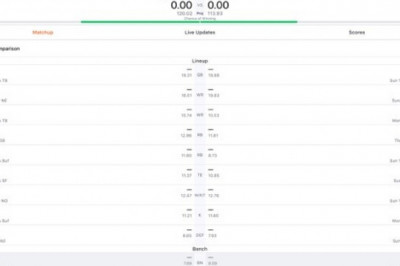views

How Does Business Process Automation Happen and Work?
Business process automation or BPA is the process of making repeatable tasks easier by infusing digital experience. Certainly, advanced technologies offer a great help in accelerating to production in a fast turnaround time. The information keeps on routing to the concerned person at the right time through an automated workflow and the customers’ demand keeps fulfilling.
Making it happen is difficult. Several rules and standards are defined and designed to create its blueprint.
Result?
It’s obvious that the organizations keep up and running, continuing their work and deliveries even if the conditions are not-so-friendly. Simply put, automation is a corporate life savior that is capable of addressing business problems, such as employee onboarding, strategy-making, innovating, supporting customers, managing accounts, transactions and many more things.
Key Elements to Streamline BPA
• Department-wise operational data
• Data conversion from PDFs
• Repeatable process
• Cleansing process to make data free from error
• Exporting system
How Does Business Process Automation Happen?
Business process automation is not about converting data into digital, but to design and define their value & integrity in a system to carry out a workflow. It actually aims at making process cost-effective, streamlined, error-free and transparent while saving time and improving operational efficiency.
· Develop Clear Understanding
It all starts with a clear understanding of what tasks you are going to carry out, responsible person and define each task to be executed.
· Define Goals
Clearly define goals related to your business processes to save a lot of time preventing rework on corrections.
· Upload or Add Data Source
Gather the data to import and then, classify it into various files and documents. Get them stored at a specific location in the data entry automation system.
· Pre-Processing of File or Document
This step involves conversion and de-cluttering of all documents into machine readable formats using advanced OCR to read, scan, recognise and digitalise documents.
· Recognize & Extract Data
With the help of scripts and customised codes, the digitalized data are to be recognised and extracted useful insights using AI and ML capacities. Certainly, it needs proper training of the ML algorithms.
· Validate the extracted data
This step ensures setting up validations for manual & semi-automated verification. Extracted data can put there to check for their accuracy and can even be improved, if required.
· Export Data to Departments
This is the final step which is to send the verified data to an appropriate location on the server. The data can be structured as XML, JSON, EXCEL or CSV files, as these are easy to import and export during the workflow.
Post Automation Evaluation
· Once the process is complete, the results or outcome should be measured with a phased approach. It is crucial to improve and turn automation feasible.
· Provide training to employees in an adequate time.
· Keep on monitoring, updating data and integrating it to analysis, which results in strategies or business intelligence to make customers happy and returns higher than ever.
How does it work?
It works outstandingly well, as the repetitive tasks are carried out in no time. Typos are removed in a second through autocorrect and normalization of data becomes easy with autocomplete data. In short, you get sufficient time to focus your energy on expansion, growth and quality improvement.
Its benefits define how excellently it works for any business goal or vision. Here they are!
· Bring Greater Accuracy
With AI and ML capabilities, it takes a few seconds to extract and pool data accurately from various web resources. It all happens through a script, which minimizes human interference. With specific instructions, these algorithms check data in no time.
· Reduce Costs
The operational costs and overheads cut down while boosting efficiency of the entire business operation. The automated system executes what you need from an outsourcing data entry company.
· Save Time
The backend office practices accelerate with a great pace, which scale from data entry automation to analysis, reporting & decision making. It takes way lesser time than that of manual practices. And every task goes on professionally.
· Ensure Scalability
The large volume of important files can be easily handled, which means more work can be aligned to this system. It ensures way to scalability.
· Boost Productivity
The resources are now strategically allocated for an overwhelming production, which directly spikes the customer experience and maximizes returns.
· Increase Employee Satisfaction
The attrition rate of employees goes down, as there remains no resentment between employees while handling the same tasks repeatedly many times a day. It brings a sort of positivity to stay engaged there with the work.
· Easy Processing
AI-based intelligence can easily classify specific document types accurately. Such software can intelligently group documents by their type, such as invoice, receipt, bill etc. or by source, such as supplier, vendor, internal etc. for further processing & data entry.












